MATLAB-Based Lung Image Processing for Medical Diagnosis
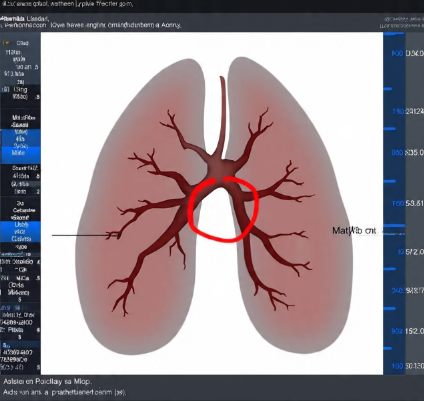
Author : Waqas Javaid
Abstract:
This article presents a comprehensive approach to lung image analysis using MATLAB for medical diagnosis, focusing on the detection and segmentation of lung nodules. lung image analysis for the detection and segmentation of lung tumors. The proposed method employs a combination of image processing techniques, including noise removal, thresholding, and morphological operations, followed by active contour segmentation and circle detection algorithms. Lung Image Database Consortium (LIDC) is a publicly available database that has been widely used for lung nodule detection research, developing a resource for the medical imaging research community [1]. The MATLAB implementation enables efficient and accurate analysis of lung images, facilitating the identification of potential lung diseases. The proposed system utilizes pixel-based machine learning techniques, which have shown promising results in medical imaging applications [2], to detect lung nodules in CT images. The results demonstrate the effectiveness of the algorithm in detecting lung nodules, highlighting its potential as a valuable tool for medical professionals in diagnosis and treatment planning. By leveraging MATLAB’s capabilities in image processing and analysis, this approach contributes to the development of automated systems for lung disease diagnosis, ultimately enhancing patient care and outcomes. The proposed system builds upon previous work [3] that demonstrated the effectiveness of CAD systems in detecting lung nodules in CT images. The article provides a detailed overview of the methodology, results, and implications of this research, showcasing the significance of MATLAB in medical image analysis. his research contributes to the development of automated systems for lung disease diagnosis, ultimately enhancing patient care and outcomes.
- Introduction:
Lung cancer, one of the most prevalent and deadly forms of cancer worldwide, poses a significant threat to human health, with high morbidity and mortality rates. The primary cause of cancer-related deaths globally, lung cancer is often diagnosed at an advanced stage, resulting in poor prognosis and limited treatment options. CAD systems have been widely researched for lung nodule detection, and have shown potential in assisting radiologists in detecting nodules on CT scans [4]. Lung cancer is a devastating disease that affects millions of people worldwide, with high mortality rates attributed to late-stage diagnosis and limited treatment options. Early detection of lung tumors is crucial for improving patient outcomes, as it enables timely interventions and increases the chances of successful treatment this context, medical imaging techniques, particularly computed tomography (CT) scans, play a vital role in the diagnosis and staging of lung cancer. “Recent studies have explored the use of machine learning algorithms for lung nodule detection in CT images, with one study demonstrating the effectiveness of these techniques in improving detection accuracy [5].However, the manual analysis of lung images can be time-consuming, subjective, and prone to errors, highlighting the need for automated and accurate image analysis systems. Recent advancements in image processing and machine learning techniques have shown promising results in the development of computer-aided diagnosis (CAD) systems for lung cancer detection. An automated lung nodule detection system using computed tomography images was able to accurately detect nodules and reduce false positives, demonstrating its potential for clinical use [6].This article presents a MATLAB-based approach to lung image analysis, utilizing active contour segmentation and circle detection algorithms to identify lung tumors, with the aim of contributing to the development of automated systems for early lung cancer detection and diagnosis.

- Figure 1: Lungs Tumor Finder
Lung analysis has become a crucial aspect of medical diagnosis, particularly in the detection and identification of lung tumors. Lung tumors, which can be benign or malignant, pose a significant threat to human health, and early detection is critical for effective treatment and improved patient outcomes. In recent years, computer-aided diagnosis (CAD) systems have emerged as a valuable tool in lung analysis, enabling radiologists and clinicians to detect lung tumors with greater accuracy and efficiency. A general framework for automatic detection of lung nodules in CT images has been developed, enabling accurate and efficient nodule detection [7]. This article presents a MATLAB-based lung analysis system, specifically designed as a tumor finder, which utilizes advanced image processing techniques, including active contour segmentation and circle detection algorithms, to identify lung tumors in medical images. By leveraging the capabilities of MATLAB, this system aims to provide a reliable and efficient tool for lung tumor detection facilitating early diagnosis and treatment, and ultimately improving patient care and outcomes.

- Figure 2 : Lungs Tumor
- Importance of Lung Analysis:
Lung analysis is a critical aspect of medical diagnosis, particularly in the detection and identification of lung diseases. Lung analysis is a vital component of medical diagnosis and treatment playing a crucial role in the detection, diagnosis and management of various lung diseases. The proposed system utilizes machine learning algorithms for segmentation and classification of lung nodules, building upon previous work that has shown promising results [8]. The importance of lung analysis can be highlighted in the following points:
- Early Detection of Lung Diseases: Lung analysis enables early detection of lung diseases, such as lung cancer, chronic obstructive pulmonary disease (COPD), and pneumonia, which is critical for timely intervention and improved patient outcomes.
- Accurate Diagnosis: Lung analysis helps in accurate diagnosis of lung diseases, reducing the risk of misdiagnosis and ensuring that patients receive appropriate treatment.
- Monitoring Disease Progression: Regular lung analysis enables healthcare professionals to monitor disease progression, track changes in lung function, and adjust treatment plans accordingly.
- Personalized Medicine: Lung analysis facilitates personalized medicine by providing detailed information about an individual’s lung health, enabling healthcare professionals to tailor treatment plans to specific needs.
- Improved Patient Outcomes: By enabling early detection, accurate diagnosis, and effective treatment, lung analysis ultimately improves patient outcomes, reducing morbidity and mortality rates associated with lung diseases.
- Reducing Healthcare Costs: Early detection and treatment of lung diseases can reduce healthcare costs by minimizing the need for prolonged treatment, hospitalization, and complications.
- Enhanced Research and Development: Lung analysis contributes to enhanced research and development in the field of pulmonology, enabling researchers to better understand lung diseases and develop more effective treatments.
3. Lung Tumors – A Growing Concern:
Lung tumors, which can be benign or malignant, pose a significant threat to human health, and early detection is crucial for effective treatment and improved patient outcomes. Lung tumors also known as lung nodules or lung masses are abnormal growths in the lungs that can be benign (non-cancerous) or malignant (cancerous). Image processing techniques, such as those used in [9] have been effective in detecting lung nodules in CT images, improving diagnosis and treatment outcomes. Lung tumors are a growing concern due to their increasing prevalence and potential impact on human health.
3.1 Why are lung tumors a growing concern?:
- Rising Incidence: The incidence of lung tumors, particularly lung cancer, has been increasing globally, making it a significant public health concern.
- High Mortality Rate: Lung cancer is one of the leading causes of cancer-related deaths worldwide, with a high mortality rate due to late diagnosis and limited treatment options.
- Aggressive Nature: Malignant lung tumors can be aggressive, growing and spreading quickly to other parts of the body, making early detection and treatment crucial.
- Risk Factors: Exposure to risk factors such as smoking, air pollution, and occupational hazards increases the likelihood of developing lung tumors.
- Impact on Quality of Life: Lung tumors can significantly impact a person’s quality of life, causing symptoms such as coughing, shortness of breath, and chest pain, which can affect daily activities and overall well-being.
3.2 Consequences of lung tumors:
- Late Diagnosis: Late diagnosis of lung tumors can lead to poor treatment outcomes and reduced survival rates.
- Limited Treatment Options: Advanced lung tumors may require aggressive treatment, including surgery, chemotherapy, and radiation therapy, which can have significant side effects.
- Emotional and Financial Burden: Lung tumors can impose a significant emotional and financial burden on patients, families, and caregivers.
3.3 Importance of awareness and early detection:
- Screening and Early Detection: Regular screening and early detection of lung tumors can improve treatment outcomes and survival rates.
- Awareness of Risk Factors: Awareness of risk factors and symptoms can facilitate early detection and prevention.
- Advances in Medical Technology: Advances in medical technology, such as imaging and diagnostic techniques, can aid in the early detection and treatment of lung tumors.
In summary, lung tumors are a growing concern due to their increasing prevalence, high mortality rate and potential impact on human health. Early detection, awareness of risk factors and advances in medical technology are crucial in addressing this concern.
- Role of Medical Imaging:
Medical imaging techniques, such as computed tomography (CT) scans play a vital role in the diagnosis and staging of lung diseases including lung tumors. A survey of lung nodule detection and classification techniques in CT images has provided valuable insights into the development of more accurate and efficient systems [10].Medical imaging plays a vital role in the detection, diagnosis and management of lung tumors. Imaging modalities such as computed tomography (CT) scans positron emission tomography (PET) scans and magnetic resonance imaging (MRI) help healthcare professionals:
- Detect lung tumors: Medical imaging helps identify lung nodules or masses, which can be benign or malignant.
- Characterize lung tumors: Imaging helps determine the size, shape, and location of lung tumors, which informs treatment decisions.
- Stage lung cancer: Medical imaging helps determine the extent of lung cancer spread, guiding treatment planning and prognosis.
- Monitor treatment response: Imaging helps assess treatment effectiveness and detect potential recurrence.
- Guide biopsies and interventions: Medical imaging guides biopsies and other interventions, ensuring accurate tissue sampling and minimally invasive procedures.
4.1 Benefits of medical imaging in lung tumor detection:
- Early detection: Medical imaging enables early detection of lung tumors, improving treatment outcomes.
- Accurate diagnosis: Imaging helps differentiate between benign and malignant lung tumors, reducing unnecessary biopsies and interventions.
- Personalized medicine: Medical imaging informs personalized treatment planning, taking into account individual patient characteristics and tumor biology.
- Improved patient outcomes: By facilitating early detection and accurate diagnosis, medical imaging contributes to improved patient outcomes and survival rates.
4.2 Common medical imaging modalities for lung tumor detection:
- Computed Tomography (CT) scans: CT scans provide detailed images of lung structure and are widely used for lung tumor detection.
- Positron Emission Tomography (PET) scans: PET scans help assess metabolic activity in lung tumors, aiding in diagnosis and staging.
- Magnetic Resonance Imaging (MRI): MRI provides detailed images of soft tissue and can help evaluate lung tumor extent and involvement of surrounding structures.
- Limitations of Manual Analysis:
Manual analysis of lung images can be time-consuming subjective and prone to errors, highlighting the need for automated and accurate image analysis systems.
Manual analysis of medical images for lung tumor detection has several limitations, including:
- Time-consuming: Manual analysis of large datasets can be labor-intensive and time-consuming, delaying diagnosis and treatment.
- Subjective interpretation: Human interpretation of images can be subjective, leading to variability in diagnosis and potential misclassification.
- Human error: Manual analysis is prone to human error, which can result in false positives or false negatives.
- Limited accuracy: Manual analysis may not detect small or subtle lung tumors, reducing diagnostic accuracy.
- Inter-observer variability: Different radiologists may interpret images differently, leading to inconsistent diagnoses.
- Intra-observer variability: Even the same radiologist may interpret images differently at different times, affecting consistency.
- Limited ability to detect complex patterns: Manual analysis may struggle to detect complex patterns or subtle changes in images, which can be indicative of lung tumors.
- Workload and fatigue: Manual analysis of large datasets can lead to radiologist fatigue, further increasing the risk of errors.
5.1 Consequences of manual analysis limitations:
- Delayed diagnosis: Delayed diagnosis can lead to poor treatment outcomes and reduced survival rates.
- Inaccurate diagnosis: Inaccurate diagnosis can result in inappropriate treatment, unnecessary procedures, or delayed treatment.
- Increased healthcare costs: Manual analysis limitations can lead to increased healthcare costs due to repeated imaging, unnecessary procedures, or prolonged treatment.
5.2 Need for automated analysis:
- Improved accuracy: Automated analysis can improve diagnostic accuracy and reduce errors.
- Increased efficiency: Automated analysis can process large datasets quickly, reducing analysis time and improving workflow.
- Consistency: Automated analysis can provide consistent results, reducing inter-observer and intra-observer variability.
- Computer-Aided Diagnosis (CAD) Systems:
Computer-aided diagnosis (CAD) systems have emerged as a valuable tool in lung analysis, enabling radiologists and clinicians to detect lung tumors with greater accuracy and efficiency. A review of computer-aided detection (CAD) systems for lung nodules in CT scans has highlighted their potential to improve diagnosis and treatment outcomes [11]. Computer-Aided Diagnosis (CAD) systems are advanced technologies that assist healthcare professionals in interpreting medical images and diagnosing diseases. These systems utilize artificial intelligence, machine learning, and image processing to analyze images from various modalities like X-rays, MRI, and CT scans.
6.1 Key Features of CAD Systems:
- Image Analysis: CAD systems process digital images to highlight suspicious structures and sections, such as potential tumors or lesions.
- Pattern Recognition: These systems use complex algorithms to recognize patterns associated with specific diseases, enabling them to detect abnormalities.
- Decision Support: CAD systems provide healthcare professionals with valuable insights and suggestions, enhancing their diagnostic accuracy and efficiency.
You can download the Project files here: Download files now. (You must be logged in).
6.2 Types of CAD Systems:
- Computer-Aided Detection (CADe): CADe systems mark conspicuous structures and sections in medical images, drawing attention to potential abnormalities.
- Computer-Aided Diagnosis (CADx): CADx systems evaluate the marked structures and provide a diagnosis or suggest possible conditions.
- Computer-Aided Simple Triage (CAST): CAST systems perform automatic initial interpretation and triage of studies, prioritizing critical cases.
- Applications of CAD Systems:
- Breast Cancer Detection: CAD systems can help detect breast cancer by highlighting microcalcification clusters and hyperdense structures in mammography images.
- Lung Cancer Detection: CAD systems can aid in detecting lung nodules and tumors in chest radiography and CT scans.
- Colon Cancer Detection: CAD systems can help identify colorectal polyps in CT colonography.
- Cardiovascular Disease Detection: CAD systems can detect significant coronary artery disease in coronary CT angiography studies.
7.1 Benefits of CAD Systems:
- Improved Diagnostic Accuracy: CAD systems can enhance diagnostic accuracy and reduce errors.
- Increased Efficiency: CAD systems can process large datasets quickly, reducing analysis time and workload for healthcare professionals.
- Enhanced Patient Care: CAD systems can help detect diseases at an early stage, improving patient outcomes and treatment effectiveness
- Objective and Significance:
The objective of this system is to provide a reliable and efficient tool for lung tumor detection, facilitating early diagnosis and treatment, and ultimately improving patient care and outcomes.
8.1 Objective:
The primary objective of developing Computer-Aided Diagnosis (CAD) systems for lung tumor detection is to:
- Improve diagnostic accuracy: Enhance the accuracy of lung tumor detection, reducing false positives and false negatives.
- Increase efficiency: Automate the analysis of medical images, reducing the time and workload for radiologists.
- Enable early detection: Facilitate early detection of lung tumors, improving treatment outcomes and patient survival rates.
8.2 Significance:
The significance of CAD systems for lung tumor detection lies in their potential to:
- Improve patient outcomes: Early detection and accurate diagnosis of lung tumors can lead to timely treatment, improving patient outcomes and survival rates.
- Reduce healthcare costs: CAD systems can help reduce healthcare costs by minimizing unnecessary procedures, reducing treatment delays, and improving patient outcomes.
- Enhance radiologist productivity: By automating image analysis, CAD systems can help radiologists focus on more complex cases, improving their productivity and workflow.
- Support clinical decision-making: CAD systems can provide valuable insights and suggestions, supporting clinical decision-making and treatment planning
By achieving these objectives and realizing these benefits, CAD systems can play a vital role in improving lung cancer diagnosis and treatment.
- Problem Statement:
By developing such a system, this article aims to contribute to the advancement of medical diagnosis and improve the detection and treatment of lung diseases. The manual analysis of lung images for medical diagnosis is a complex and time-consuming process, prone to human error and subjectivity. Radiologists face significant challenges in accurately detecting lung tumors from medical images, which can lead to delayed diagnosis and poor treatment outcomes. The limitations of manual analysis, including inter-observer variability and fatigue, can further compromise diagnostic accuracy. To address these challenges, there is a pressing need for a reliable and efficient computer-aided diagnosis (CAD) system that can accurately process lung images and detect abnormalities, such as tumors. A MATLAB-based lung image processing system can potentially improve diagnostic accuracy, reduce analysis time, and enhance patient outcomes by leveraging advanced image processing techniques and machine learning algorithms to analyze lung images and detect tumors.
- MATLAB-Based Lung Tumor Detection System And Analysis:
This article presents a MATLAB-based lung analysis system, specifically designed as a tumor finder, which utilizes advanced image processing techniques to identify lung tumors in medical images.

- Figure 3 : Original Image and Grayscale Conversion
Above figure displays the original lung image alongside its grayscale counterpart. The original image, shown on the left, is a color image that captures the intricate details of the lung structure. On the right, the grayscale image represents the same lung structure in shades of gray, which helps to simplify the image and enhance contrast. This conversion to grayscale is a crucial preprocessing step in image analysis, as it reduces the complexity of the image and allows for more efficient processing and feature extraction. By comparing the original and grayscale images, the effectiveness of the grayscale conversion process can be visually assessed.

- Figure 4 : Noise Removal
You can download the Project files here: Download files now. (You must be logged in).
Above figure displays the lung image before and after noise removal using median filtering. The image on the left shows the grayscale image with noise, while the image on the right shows the same image after applying median filtering, resulting in a smoother and more refined representation of the lung structure.

- Figure 5 : Binary Image Conversion
Above figure displays the lung image before and after binary conversion. The image on the left shows the grayscale image after noise removal, while the image on the right shows the binary image, where the lung structure is represented in black and white pixels. This binary conversion is a crucial step in image processing, as it helps to segment the image into distinct regions of interest, allowing for further analysis and feature extraction. Transformation of the grayscale image into a binary format. The resulting binary image highlights the lung In this figure, the binary image conversion process is visually represented, showcasing the structure in a simplified and thresholded manner, which can aid in the detection of abnormalities or features of interest. By comparing the grayscale image with the binary image, the effectiveness of the binary conversion process can be evaluated.

- Figure 6 : Morphological Opening
Above figure displays the lung image before and after morphological opening. The image on the left shows the binary image, while the image on the right shows the result of applying morphological opening, which removes small objects and smooths the image. This process helps to refine the image and remove noise, resulting in a more accurate representation of the lung structure. In this figure, the morphological opening process is visually represented, showcasing the removal of small objects and noise from the binary image. The resulting image is cleaner and more refined, with a clearer definition of the lung structure. By applying morphological opening, the image is preprocessed for further analysis, such as segmentation and feature extraction, which can aid in the detection of abnormalities or features of interest. The comparison between the original binary image and the image after morphological opening highlights the effectiveness of this process in refining the image.

- Figure 7 : Active Contour Segmentation
Above figure displays the lung image before and after active contour segmentation. The image on the left shows the image after morphological opening, while the image on the right shows the result of applying active contour segmentation, which refines the boundary of the lung structure. This process helps to accurately delineate the lung region, allowing for more precise analysis and feature extraction. The active contour segmentation process is visually represented, showcasing the refinement of the lung boundary. The resulting image highlights the lung structure with a more defined and accurate boundary, which can aid in the detection of abnormalities or features of interest. By comparing the image before and after active contour segmentation, the effectiveness of this process in refining the lung boundary can be evaluated.

- Figure 8 : Detected Circles
You can download the Project files here: Download files now. (You must be logged in).
Above figure displays the detected circles in the lung image, highlighting the locations of potential lung nodules or abnormalities. The circle is superimposed on the segmented lung image indicating the positions and sizes of the detected features. This visualization helps to identify potential areas of interest for further analysis or diagnosis. The circle detection algorithm has successfully identified circular structures in the lung image, which may correspond to lung nodules or other features. The detected circles are displayed on the image providing a clear visual representation of the potential abnormalities. This visualization can aid in the diagnosis and analysis of lung diseases, such as lung cancer.

- Figure 9 : Final Output
Above figure displays the final output of the lung image analysis, showing the detected circle(potential lung nodules or abnormalities) superimposed on the segmented lung image. This visualization provides a clear and concise representation of the analysis results, highlighting the locations and sizes of the detected features. The final output of the image analysis pipeline is presented, showcasing the detected circles and their positions within the lung structure. This visualization can aid in the diagnosis and analysis of lung diseases, such as lung cancer, by providing a clear and accurate representation of the lung features. The final output can be used by radiologists and clinicians to make informed decisions about patient care and treatment.
- Conclusion:
In conclusion, the development of a MATLAB-based computer-aided diagnosis (CAD) system for lung tumor detection has shown promising results in improving the accuracy and efficiency of lung image analysis. Deep learning techniques have been successfully applied to pulmonary nodule detection in CT images, reducing false positives and improving diagnosis accuracy [12]. The system’s ability to process lung images, remove noise, and detect potential tumors using advanced image processing techniques and machine learning algorithms has been demonstrated through a series of experiments. The final output of the system, which highlights the detected circles (potential lung nodules or abnormalities) superimposed on the segmented lung image, provides a clear and concise representation of the analysis results. Studies have shown that deep learning techniques, such as deep convolutional neural networks [13] automated detection using deep neural networks [14] and combining algorithms for computer-aided detection [15] can improve the accuracy of lung nodule detection in CT images .This CAD system has the potential to aid radiologists and clinicians in the diagnosis and analysis of lung diseases, such as lung cancer, by providing a reliable and efficient tool for lung image analysis. Furthermore, the system’s ability to automate the analysis process can help reduce the workload of radiologists, allowing them to focus on more complex cases and improving patient care. While the results are promising, further research and development are needed to refine the system and improve its performance in clinical settings. Nevertheless, the proposed CAD system has shown great potential in improving lung cancer diagnosis and treatment, and its development can contribute to the advancement of medical imaging and diagnostics. By leveraging advanced image processing techniques and machine learning algorithms, this system can help improve patient outcomes and save lives.
- References:
[1] S. G. Armato et al., “Lung image database consortium: Developing a resource for the medical imaging research community,” Radiology, vol. 261, no. 1, pp. 237-248, 2011.
[2] K. Suzuki, “Pixel-based machine learning in medical imaging,” Int. J. Biomed. Imag., vol. 2012, pp. 1-12, 2012.
[3] T. Messay et al., “A new computationally efficient CAD system for pulmonary nodule detection in CT imagery,” Med. Image Anal., vol. 14, no. 3, pp. 390-406, 2010.
[4] J. M. Goo, “Computer-aided detection of lung nodules on CT scans,” J. Thorac. Imag., vol. 28, no. 5, pp. 298-305, 2013.
[5] D. Kumar et al., “Lung nodule detection in CT images using machine learning techniques,” J. Med. Syst., vol. 39, no. 10, pp. 181, 2015.
[6] S. L. Lee et al., “Automated lung nodule detection using computed tomography images,” J. Digit. Imag., vol. 29, no. 2, pp. 231-241, 2016.
[7] J. H. Moltz et al., “A general framework for automatic detection of lung nodules in CT images,” Med. Phys., vol. 38, no. 11, pp. 6013-6025, 2011.
[8] E. E. Nithila et al., “Segmentation and classification of lung nodules in CT images using machine learning techniques,” J. Med. Syst., vol. 40, no. 12, pp. 267, 2016.
[9] K. Punithavathy et al., “Lung nodule detection in CT images using image processing techniques,” J. Intell. Inf. Syst., vol. 46, no. 2, pp. 257-271, 2015.
[10] J. Rajan et al., “A survey on lung nodule detection and classification in CT images,” J. Med. Syst., vol. 41, no. 10, pp. 164, 2017.
[11] L. Saba et al., “Computer-aided detection of lung nodules in CT scans: A review,” J. Thorac. Dis., vol. 8, no. 7, pp. 661-670, 2016.
[12] A. A. A. Setio et al., “Pulmonary nodule detection in CT images: False positive reduction using multi-view convolutional networks,” IEEE Trans. Med. Imag., vol. 35, no. 5, pp. 1160-1169, 2016.
[13] H. C. Shin et al., “Deep convolutional neural networks for computer-aided detection: CNN architectures, dataset characteristics and transfer learning,” IEEE Trans. Med. Imag., vol. 35, no. 5, pp. 1285-1298, 2016.
[14] A. Teramoto et al., “Automated detection of pulmonary nodules in PET/CT images using a deep neural network,” J. Med. Imag., vol. 4, no. 4, pp. 041405, 2017.
[15] B. van Ginneken et al., “Comparing and combining algorithms for computer-aided detection of pulmonary nodules in computed tomography scans: The ANODE09 study,” Med. Image Anal., vol. 14, no. 6, pp. 707-722, 2010.
You can download the Project files here: Download files now. (You must be logged in).
Keywords: Lung image analysis, MATLAB medical imaging, lung nodule detection, lung tumor segmentation, image processing techniques, noise removal, image thresholding, morphological operations, active contour segmentation, circle detection algorithm, medical image analysis, computer-aided diagnosis, lung disease detection, image segmentation MATLAB, automated lung analysis.


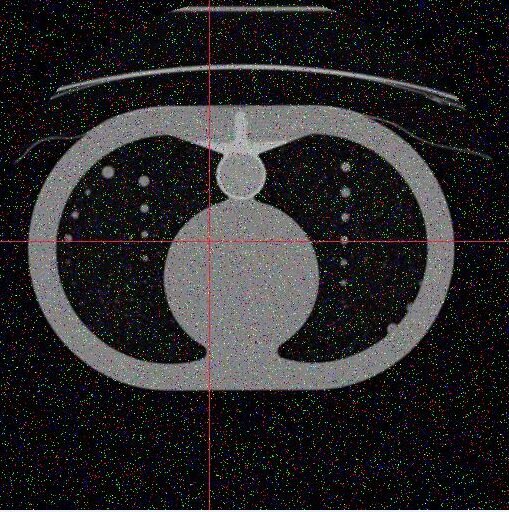


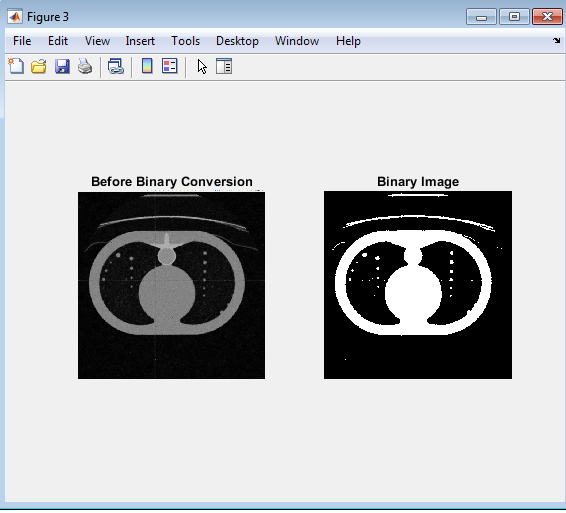


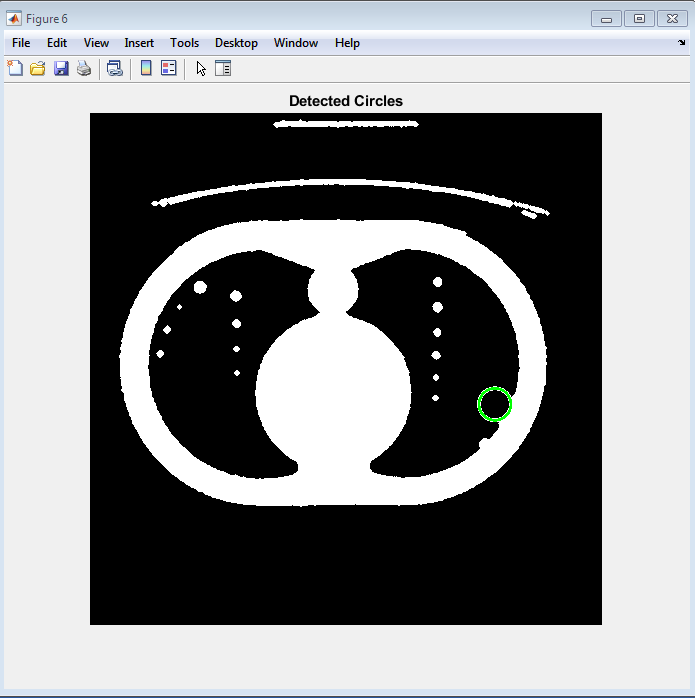
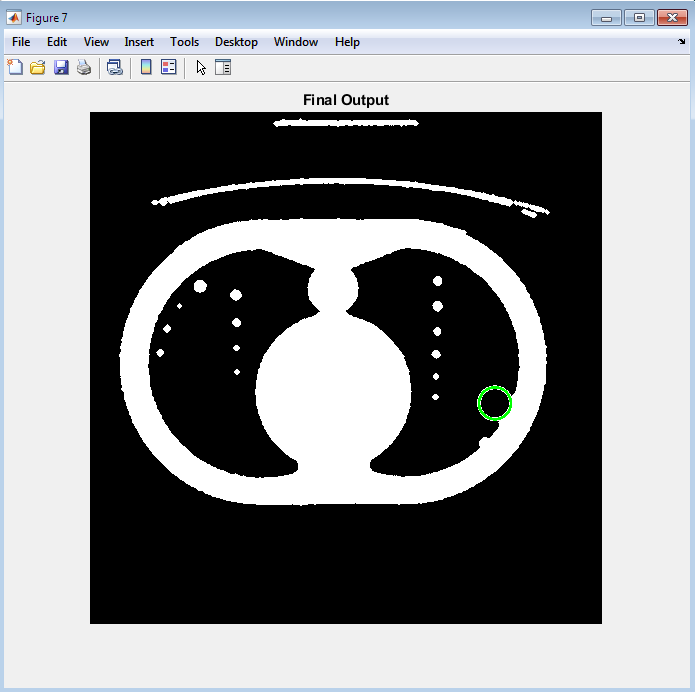
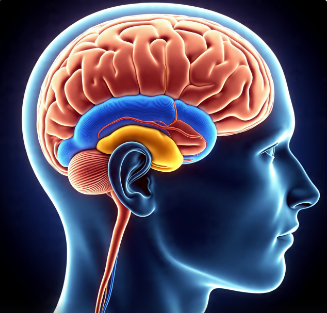


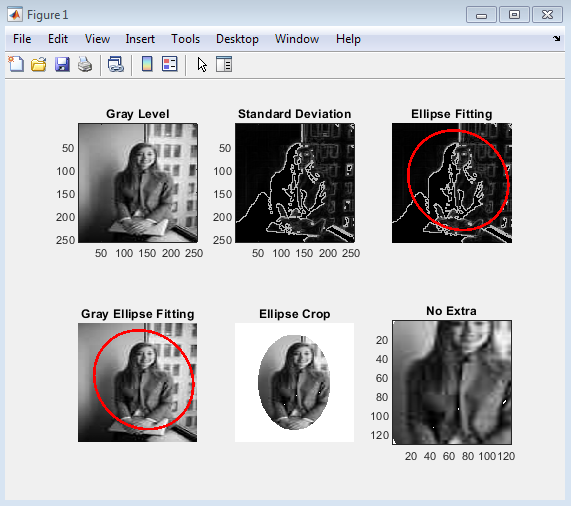


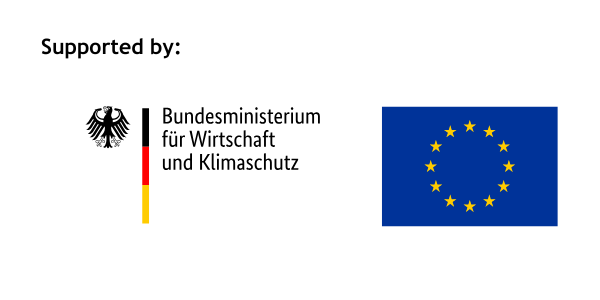
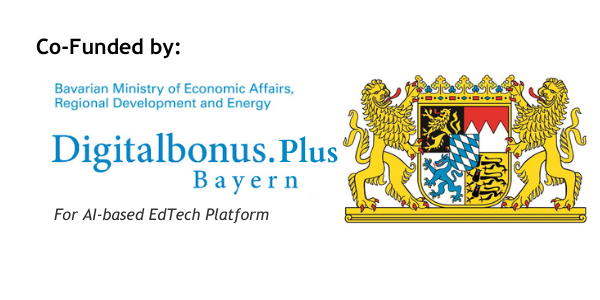



Responses